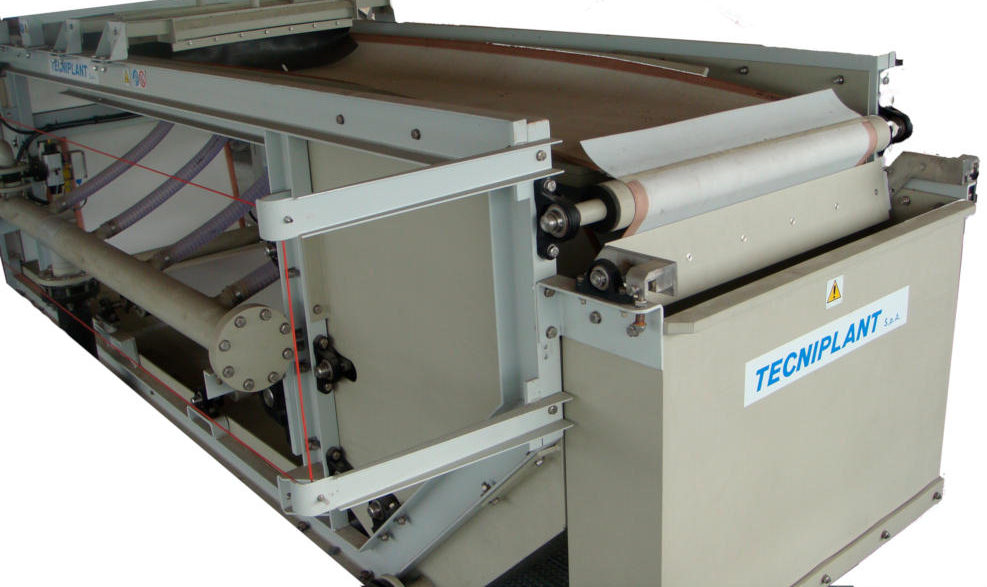 Vacuum belt filters are ideal for filtration processes that involve the presence of heavy solids and large filtration surfaces.
Vacuum belt filters are ideal for filtration processes that involve the presence of heavy solids and large filtration surfaces.
These filters are a subcategory of horizontal vacuum filters, with which they share great flexibility and a high filtration rate.
The main feature of the belt filter system is the additional presence of the filtration cloth and a special reinforced rubber belt with draining grooves.
Specifically, the rubber belt is activated by means of a variable speed drum, while the vacuum action is created by a vacuum box system. The belt is long-lasting, easy to replace, and guarantees a perfect seal between the moving part of the filter (the rubber belt and the cloth) and the fixed part (the vacuum box).
At the end of the filtration phase, the cake is removed by means of a knife discharge device. At this point, the cloth moves under the rubber belt and is cleaned by a spray nozzle washing system. The filtered liquid is drained through the central grooves of the belt and sent to the vacuum box and filtered liquid collector.



